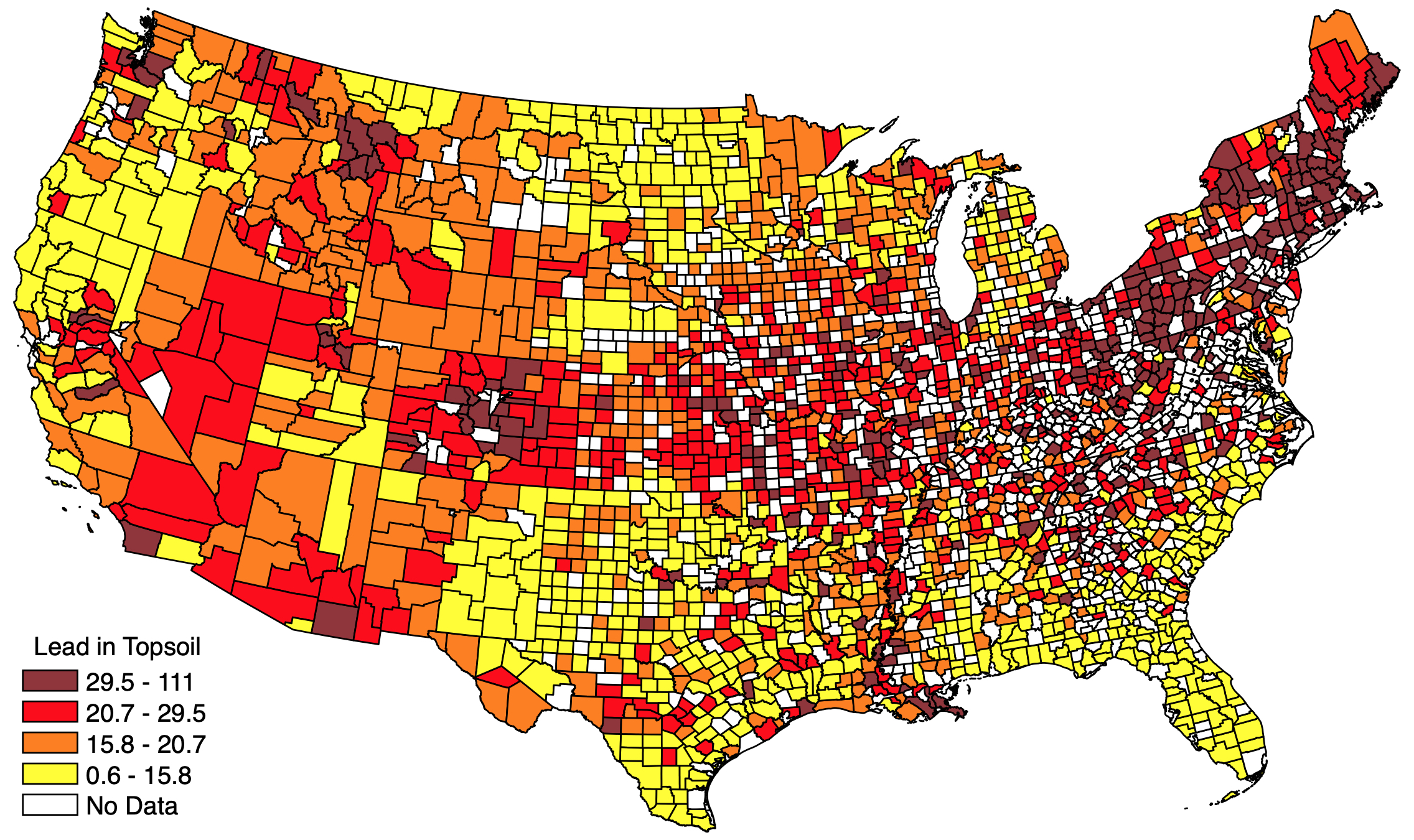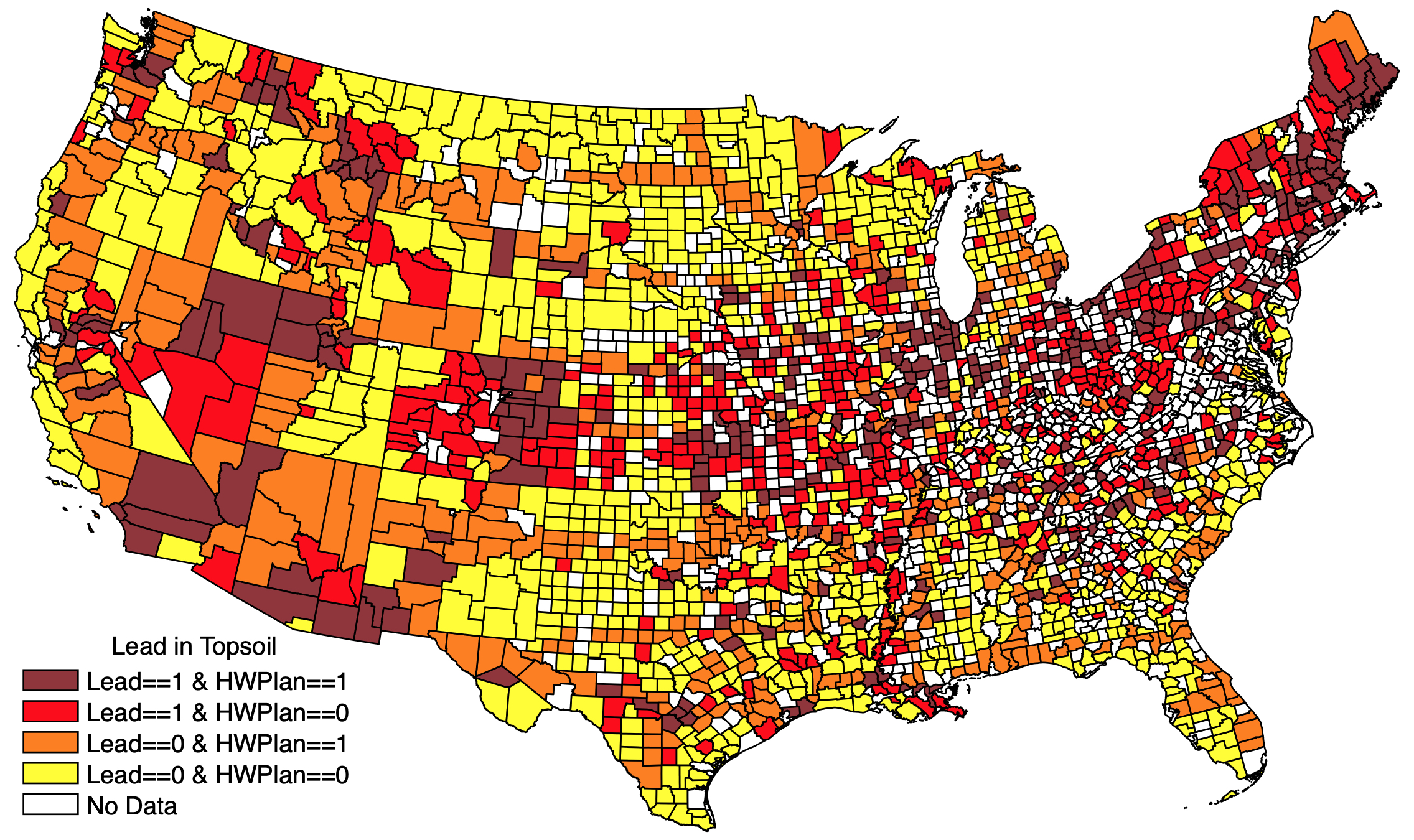A Toxic Truth: Lead Exposure Problems Linger In Soil, Air
Research shines new light on old environmental issues that continue to impact the health of children
By Scottie Barsotti
The water crisis in Flint, Michigan — which began in 2014 but to this day has not been completely resolved — brought the public health and economic costs of lead exposure into sharp focus. The crisis sparked conversations about environmental justice and raised awareness about the impacts of lead in water in particular.
But water isn't the only way people can be exposed to dangerous levels of lead. Carnegie Mellon University's Karen Clay warns that lead-contaminated air and topsoil pose serious health risks as well. It's important to be aware of personal exposure, because lead can cause negative health outcomes such as reduced fertility in adults and cognitive difficulties in young boys.
"When you're thinking about impacts on children, we don't have systematic data on the characteristics of these kids," said Clay, a professor of economics and public policy in the Heinz College of Information Systems and Public Policy and the Tepper School of Business. "Yes, blood lead levels are collected for children, but not all children get tested. You need pediatricians who are thinking about this and willing to encourage parents to get their kids tested. And even then, sometimes the parents won't get the testing."
Clay conducted research with colleagues Edson Severnini and Magarita Portnykh. The team looked at data related to lead levels in soil, which still remain in many parts of the United States following the ramp down of leaded gasoline. Lead in soil can be resurfaced by human activity and can become airborne in some cases. For example, walking over a patch of contaminated soil — or a child playing in dirt — can re-suspend lead in the air. Lead also can settle on clothing and the skin and be tracked into households.

This figure shows the lead concentration (mg/kg) in topsoil, at a depth of 0 to 5 centimeters. Data are taken from U.S. Geological Survey. Soils samples started to be collected for pilot studies from 2004 to 2007, but the main samples were collected by state with the last one collected in late 2010.
By using data from the U.S. Geological Survey as well as the U.S. Census, the researchers could view a broad-based picture of American households and see a large variation in lead levels in soil from one U.S. county to the next.
Research has shown that blood lead level in children can translate into lower IQ and increased violence, and that reductions in lead can lead to better behavioral outcomes. Clay said she hopes her team's findings about cognition in addition to those other documented risks will move policymakers to focus on lead mitigation.
"We should prioritize site cleanups for any grounds that are used by kids: schoolyards, playgrounds, places like that. We should start with the people who are the most vulnerable," she said. "Once you've cleaned up areas most used by children, you could move on to the other areas that are most contaminated and work your way down until you arrive at a more acceptable level."
Site cleanup can be expensive and create logistical hurdles, however. Clay suggests it could be beneficial to include lead mitigation in larger debates about climate change, infrastructure and the green economy.
"We could also change regulations around building demolition. When buildings are demolished, older buildings in particular, they can send up significant plumes of lead that are highly concentrated," Clay said. "Those lead plumes are tricky because they tend not to be well monitored, there will be a spike in the lead levels for an hour or so, or they won't show up on monitors at all. It can still have consequences for people in the vicinity."

This figure shows counties with topsoil lead concentration above the median (Lead=1) and below the median (Lead=0), as well as counties with and without highway as planned in the 1944 Interstate Highway System Map (HWPlan=1 and HWplan=0, respectively).
Clay said the U.S. needs to revisit what is considered appropriate levels of lead exposure, as well as better measures and better data, down to the block level.
"We should also require lead testing in children, because that would help us identify problem areas," Clay said. "You could also create incentives for water and soil to be tested when houses are sold, just like dye testing your sewer system is required in many jurisdictions."
Clay and Severnini recently presented their findings on fertility to the Environmental Protection Agency.
"The fertility finding is very concerning because many countries have birth rates that are already below replacement level. The U.S. fertility rate has been declining as well. You want to make sure that there are not environmental factors that are making that worse, or lowering birth weights," said Clay. She notes there are many factors that can affect fertility rates, but argues that pollution should not be one of them because solutions are available.
"If the birth rate continues to fall, it will create lots of social and economic problems in the long term," she said.
Putting forth these findings could serve to shake policymakers out of a sense that the country's lead problem is a thing of the past. Clay said that when she talks about lead with fellow economists, the response she gets is often some variation of "Didn't we already solve that problem?"
"Clearly we didn't solve it because we have a lot of lead in our soil today and a lot of children who are still testing above the threshold, so that suggests the issue has not gone away," Clay said. "Plus, you have episodes like in Flint where a change in the water's chemistry caused a spike in lead exposure. In places where you have lots of older lead pipes, including here in Pittsburgh, you could run into a similar issue. We want to make sure people are aware that these problems continue so we can continue to work to solve them."
Carnegie Mellon University is committed to educating, empowering and aligning its community around the world to address the Sustainable Development Goals, also known as the Global Goals, which aim to create a more peaceful, prosperous planet with just and inclusive societies. Recognizing the critical contributions that universities are making through education, research and practice, CMU publicly committed to undertaking a Voluntary University Review of the Global Goals. The 17 Global Goals cover wide-ranging issues, including reducing violence, ending extreme poverty, promoting equitable education, fighting inequality and injustice, advancing economic growth and decent work, and preventing the harmful effects of climate change by 2030.
The preceding story demonstrates CMU's work toward attaining Global Goals 3, 6 and 7.